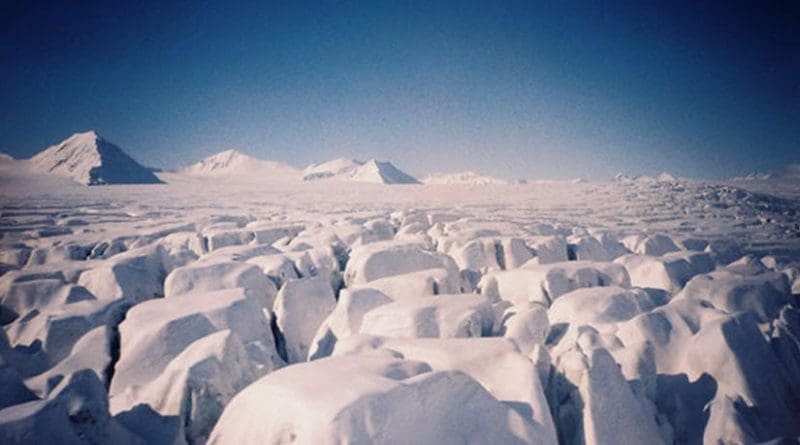Study Measures Methane Release From Arctic Permafrost
A University of Alaska Fairbanks-led research project has provided the first modern evidence of a landscape-level permafrost carbon feedback, in which thawing permafrost releases ancient carbon as climate-warming greenhouse gases.
The study was published today in the journal Nature Geoscience.
The project, led by UAF researcher Katey Walter Anthony, studied lakes in Alaska, Canada, Sweden and Siberia where permafrost thaw surrounding lakes led to lake shoreline expansion during the past 60 years. Using historical aerial photo analysis, soil and methane sampling, and radiocarbon dating, the project quantified for the first time the strength of the present-day permafrost carbon feedback to climate warming. Although a large permafrost carbon emission is expected to occur imminently, the results of this study show nearly no sign that it has begun.
The study used radiocarbon dating to determine the age of methane emitted from expansion zones, where Arctic lakes have recently grown to consume and thaw terrestrial permafrost. The age of that methane mirrors that of the ancient permafrost soil thawing alongside and beneath the lakes, and provides the largest known dataset of radiocarbon dated methane emissions.
The data is important for climate change models, since the emissions released by thawing permafrost could significantly affect levels of greenhouse gases in the atmosphere. Old carbon isn’t part of that equation if it remains trapped in frozen soil, but it’s released as methane and carbon dioxide when permafrost soils thaw and decompose.
Walter Anthony said the billions of tons of carbon stored in permafrost are about twice the amount that is currently in the atmosphere. Many researchers are concerned that if old carbon begins to cycle it could create a feedback loop — its emissions contribute to warming, which again contributes to the thawing of more permafrost.
“If you open the freezer door, you thaw permafrost soil that’s been frozen for a long time, and the organic matter in it is decomposed by microbes,” Walter Anthony said.
Grosse, a co-author of the study from the German Alfred Wegener Institute, said climate change researchers are increasingly concerned about how fast that thaw and release of carbon may happen, and whether the process has already accelerated in recent years.
The new study found the rate of old carbon released during the past 60 years to be relatively small. Model projections conducted by other studies expect much higher carbon release rates — from 100 to 900 times greater — for its release during the upcoming 90 years. This suggests that current rates are still well below what may lay ahead in the future of a warmer Arctic.
Determining the rate of old carbon release from permafrost had been a challenge for researchers, since vegetation that grows in thawed permafrost in forest and tundra systems releases its own modern organic carbon into soils, which readily decomposes and dilutes the “old carbon” signal from thawing permafrost soils. The research team led by Walter Anthony focused on methane emissions from lakes, where permafrost thaws much deeper than on land. Methane that forms in deeply thawed soils beneath lakes generates bubbles that rapidly rise to escape from lakes without mixing with younger surface carbon.

